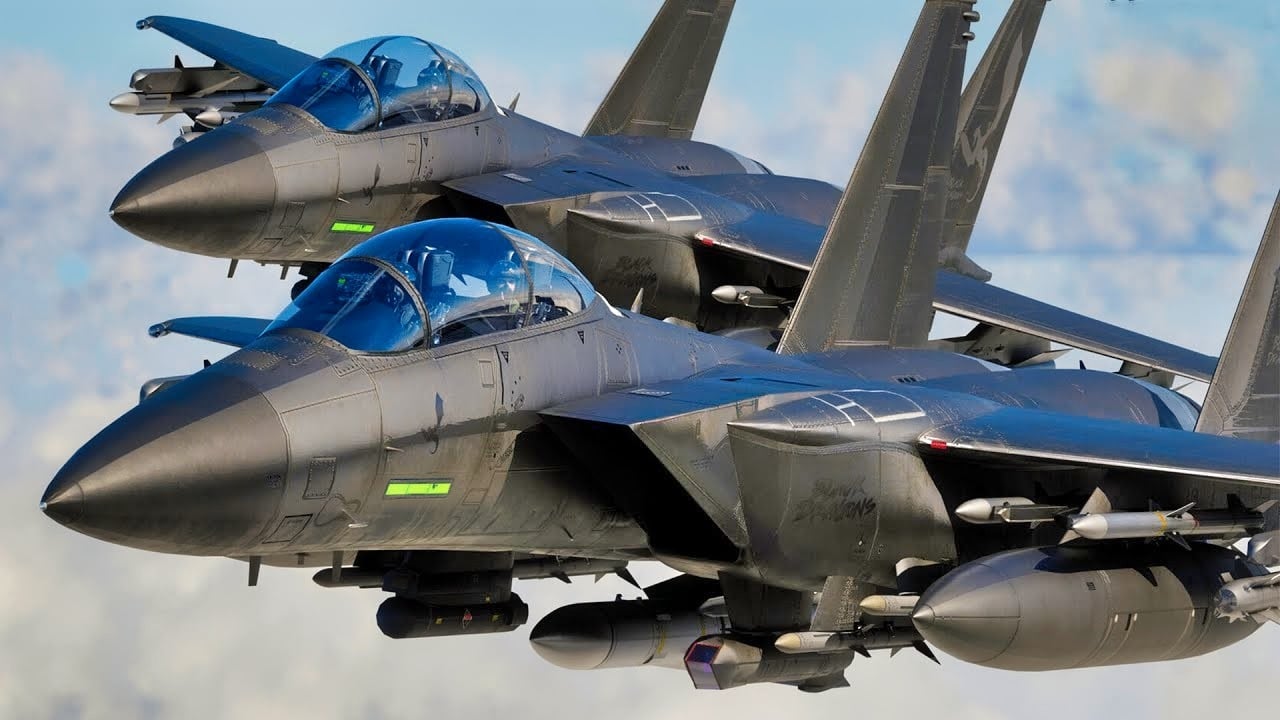Inside the F-15EX Fighter: The Air Force's Most Advanced 'Eagle' Yet

Summary and Key Points: The F-15EX Eagle II, the latest variant of the iconic F-15, boasts numerous upgrades, making it one of the most advanced fighters in the U.S. Air Force. Featuring powerful F110-GE-129 engines, the F-15EX can achieve Mach 2.5 and carry nearly 30,000 lbs of payload.

-Advanced sensors, including the APG-82 AESA radar and Legion Pod IRST, enhance threat detection, while the EPAWSS system ensures superior situational awareness.
-The F-15EX is built for versatility, capable of homeland defense and potential future roles like electronic attack and managing autonomous wingmen, highlighting its adaptability and readiness for modern combat scenarios.
F-15EX Eagle II profile
One of the most capable combat airplanes ever built, the F-15 Eagle is an instantly recognizable fighter to most aviation enthusiasts. First introduced in 1976, it has served in major conflicts across the globe. Its high-quality design has enabled it to achieve an unprecedented 100+ kills for no combat losses of its own.
In the nearly five decades of its service, the F-15 has been the subject of several major upgrades. The F-15EX is the latest variant featuring a bevy of changes and manufacturer Boeing is looking at continuing to develop this model.
An overview
In 2010, the U.S. Air Force (USAF) faced a dilemma. A decade spent focusing on counterinsurgency, a significant decrease in its order of F-22s, delays in F-35 development, and a rapidly aging fleet of F-15Cs and F-15Ds left the service a fighter shortfall. While some proposed modernizing the F-15C and F-15D fleets, that proved too costly. Instead, leadership decided to acquire an advanced Eagle incorporating enhancements from several designs for sale to Saudi Arabia and Qatar.
The upgrades cover everything from engines to sensors and avionics, making the F-15EX Eagle II a markedly better aircraft than its predecessors. Its F110-GE-129 engines produce 29,000lbs of thrust in afterburner, allowing it to fly at a whopping Mach 2.5. This increased thrust also grants the new Eagles an incredible payload capacity of nearly 30,000 lbs. Other aircraft systems upgrades include the introduction of a full fly-by-wire control system giving pilots the ability to fly right to the edge of the envelope.

Perhaps the most significant upgrades come in the form of improved sensors. The APG-82 AESA radar and Legion Pod IRST bring the F-15’s sensor suite into the twenty-first century and help it detect threats at longer ranges. The Eagle Passive/Active Warning Survivability System (EPAWSS) designed by BAE “provides the F-15 with fully-integrated radar warning, geolocation, situational awareness, and self-protection solutions to detect and defeat surface and airborne legacy, current, and future threats.” These inputs are processed by a new Advanced Display Core Processor II (ADCP II) mission computer and displayed to crewmembers on a 10x19 in large area display (LAD). To cap everything off, advancements in materials and production have increased the service life of the new Eagle to 20,000 hours, meaning more sorties and a longer lifespan.
Specs & capabilities for F-15EX Eagle II
Currently, the USAF employs the F-15EX Eagle II for homeland defense; however, its large payload and two additional pylons give theater commanders loadout flexibility. The new Eagle is rated to carry every weapon in the USAF’s arsenal as well as having the capacity for new potential weapons, such as large, standoff, hypersonic missiles. As the F-15E Strike Eagle begins to age out, F-15EXs may move into that role as well. Additionally, further flight testing and wargaming may see them integrated more closely with frontline assets like the F-22 or F-35 as weapons delivery systems.
What it can become
In addition to the roles already described, Boeing is exploring further uses for the F-15EX. Last week, Breaking Defense reported that the company is looking at incorporating electronic attack capabilities into the design similar to the E/A-18G Growler. “In seeking a Growler-like role for the jet, Boeing would presumably seek to expand the fighter’s [electronic warfare] capabilities with tools like additional jamming pods and other enabling subsystems.” Currently, the USAF possesses no organic electronic attack platforms, relying entirely on the Navy’s Growlers. Production of that aircraft is slated to end in 2027 so upgrading the EX with these capabilities could prove to be a viable option.

Recently, Defense One broke another story about potential futures for the F-15EX Eagle II: making the second crew station the nexus of a fleet of unmanned combat aircraft. In this role, the pilot would fly the aircraft and be responsible for onboard weapons systems while the rear seat crewmember would fly and manage one or several autonomous wingmen. This idea has been floated before and as the Air Force continues to pursue more autonomous systems it just may become a reality.
About the Author: Maya Carlin, Defense Expert
Maya Carlin, National Security Writer with The National Interest, is an analyst with the Center for Security Policy and a former Anna Sobol Levy Fellow at IDC Herzliya in Israel. She has by-lines in many publications, including The National Interest, Jerusalem Post, and Times of Israel. You can follow her on Twitter: @MayaCarlin.
All images are Creative Commons.
